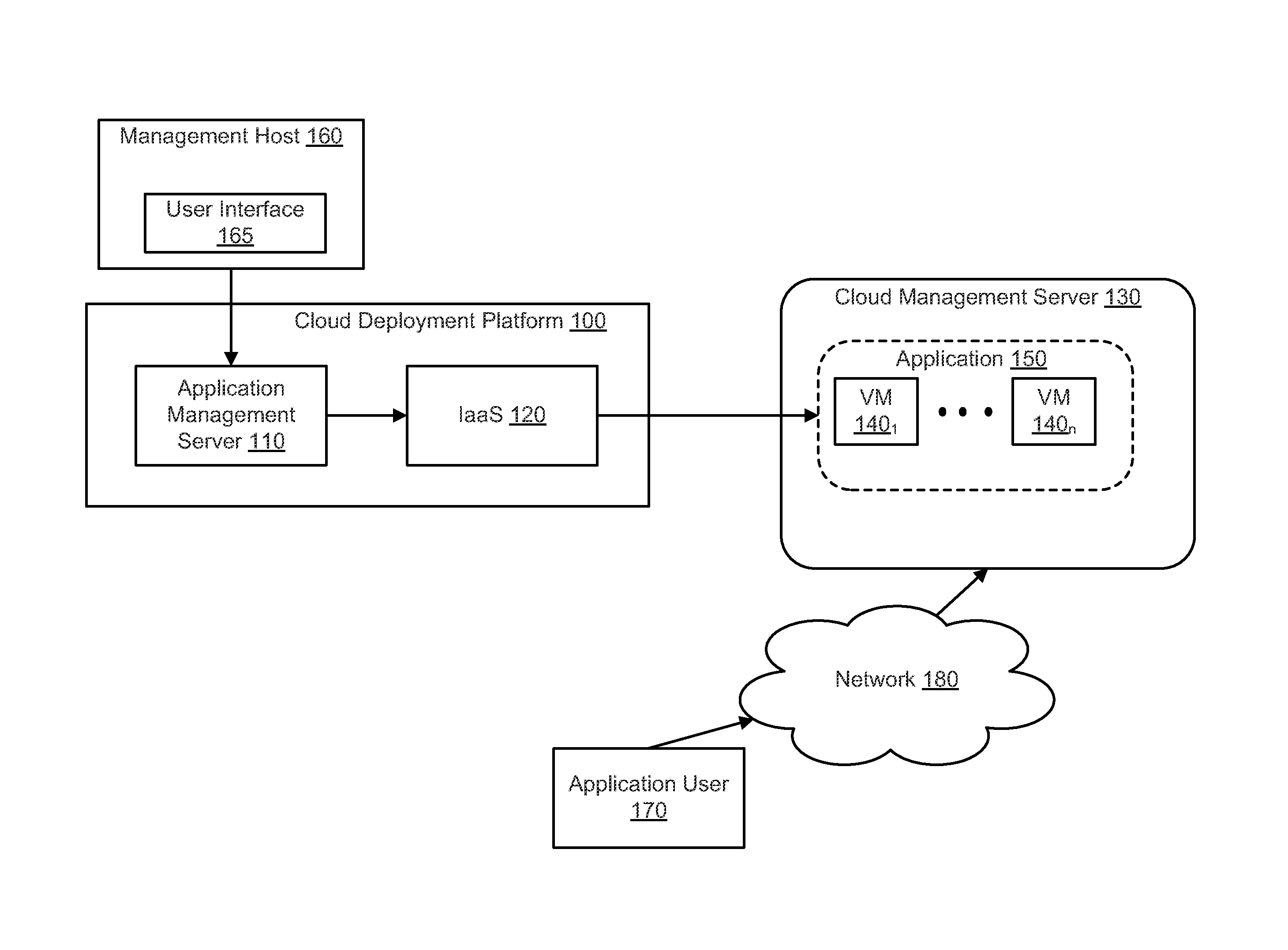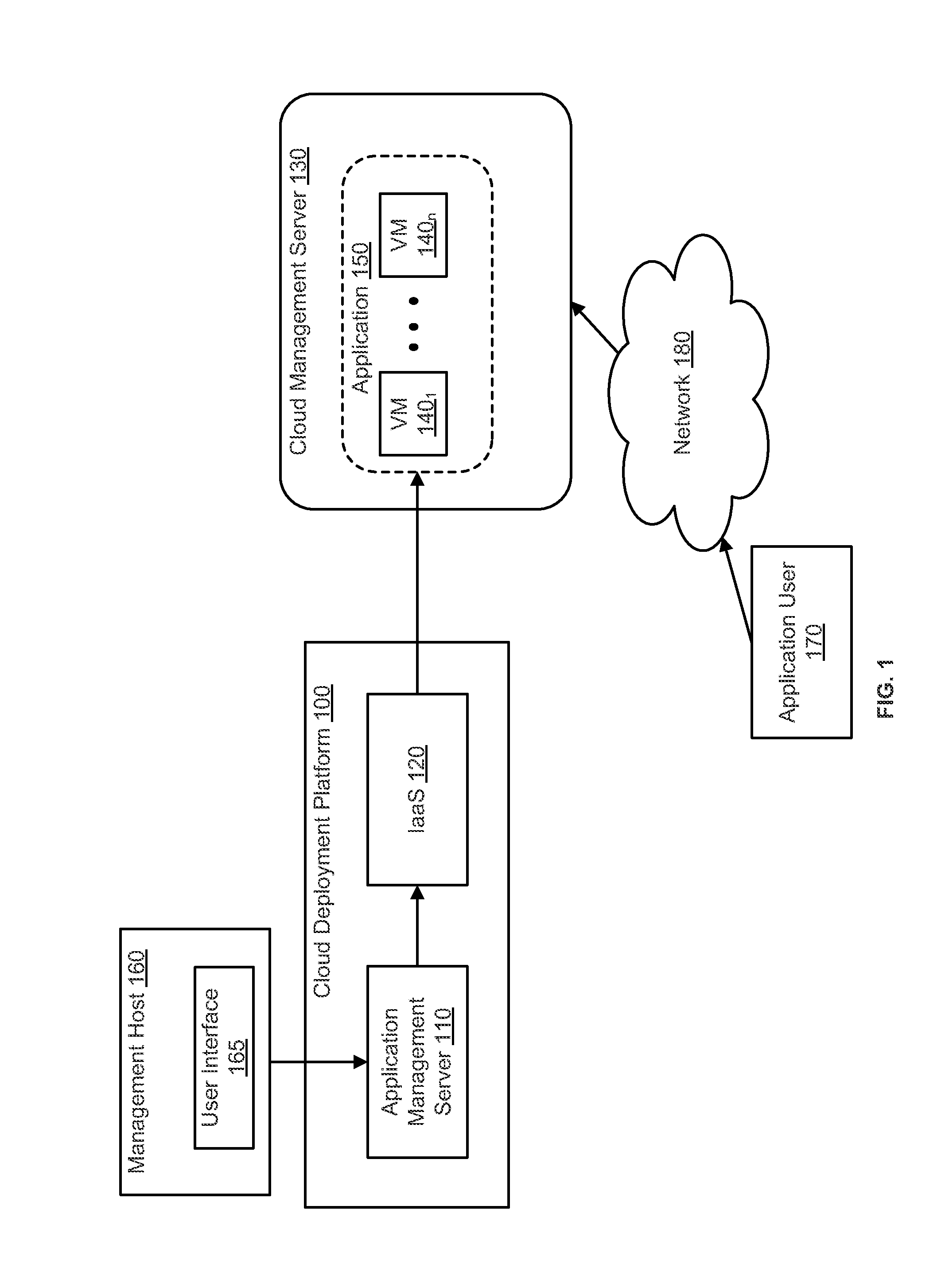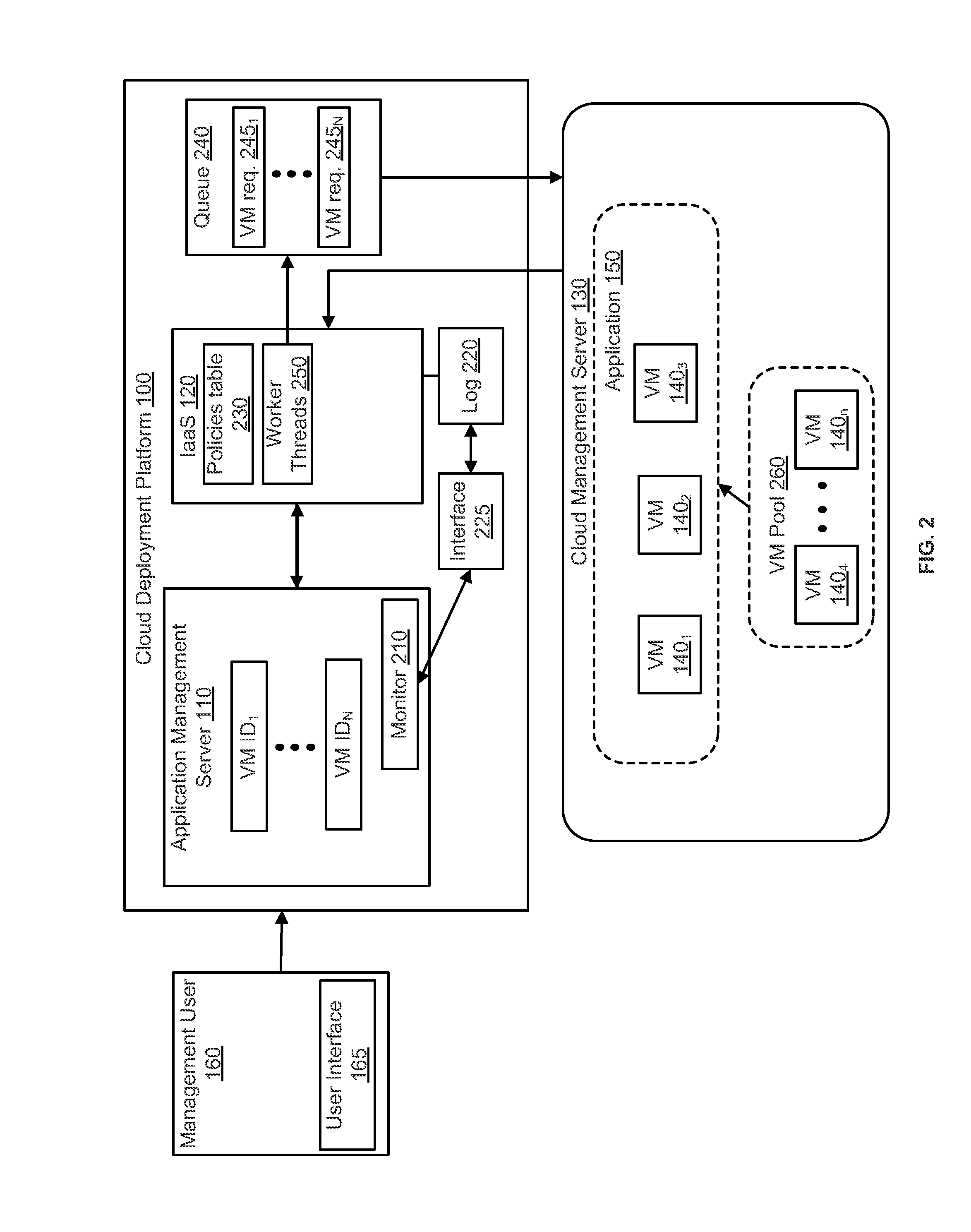Tracking application deployment errors via cloud logs
a technology of application deployment and cloud logs, applied in fault response, data switching networks, instruments, etc., can solve the problems of not maintaining associations of virtual machines with applications, insufficient resources available in cloud infrastructure for hosting virtual machines, and the number of errors in connection with deploymen
- Summary
- Abstract
- Description
- Claims
- Application Information
AI Technical Summary
Benefits of technology
Problems solved by technology
Method used
Image
Examples
Embodiment Construction
[0013]FIG. 1 is a block diagram of components of a virtualized cloud computing environment in which one or more embodiments may be implemented. Virtualized cloud computing environments typically comprise one or more computing platforms that support the creation, deployment, and management of virtual machine-based cloud applications. One such platform (referred to herein as a cloud deployment platform) is the vCloud® Automation Center, which is commercially available from VMware, Inc. of Palo Alto, Calif. FIG. 1 depicts cloud deployment platform 100 in the cloud computing environment shown. While vCloud® Automation Center is one example of a cloud deployment platform, it should be noted that any computing platform that supports the creation and deployment of virtualized cloud applications is within the scope of the present invention.
[0014]Cloud deployment platforms are usually accessed by an end user (referred to herein as a management user). A management user accesses the cloud depl...
PUM
 Login to View More
Login to View More Abstract
Description
Claims
Application Information
 Login to View More
Login to View More - R&D
- Intellectual Property
- Life Sciences
- Materials
- Tech Scout
- Unparalleled Data Quality
- Higher Quality Content
- 60% Fewer Hallucinations
Browse by: Latest US Patents, China's latest patents, Technical Efficacy Thesaurus, Application Domain, Technology Topic, Popular Technical Reports.
© 2025 PatSnap. All rights reserved.Legal|Privacy policy|Modern Slavery Act Transparency Statement|Sitemap|About US| Contact US: help@patsnap.com



